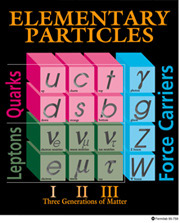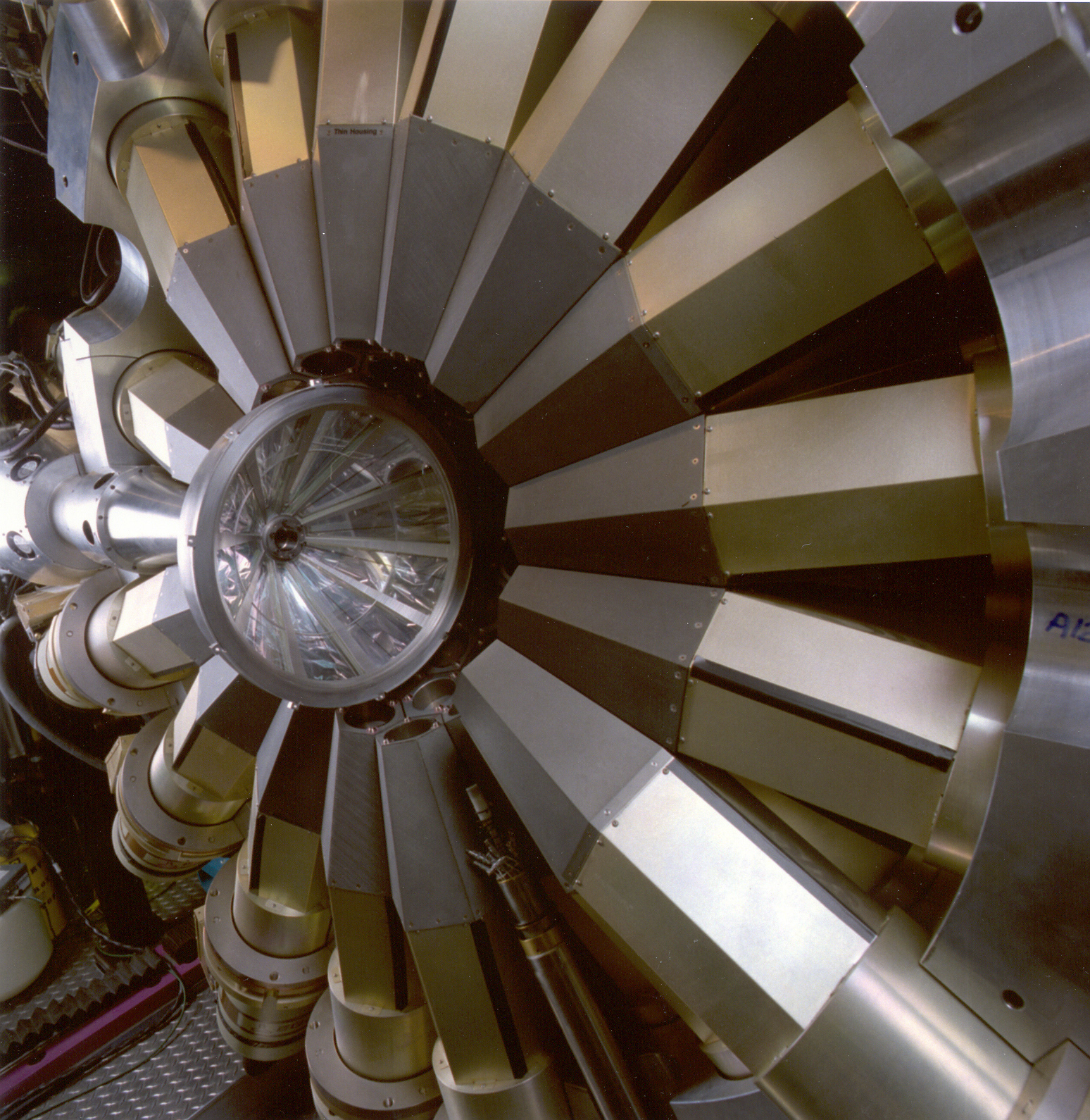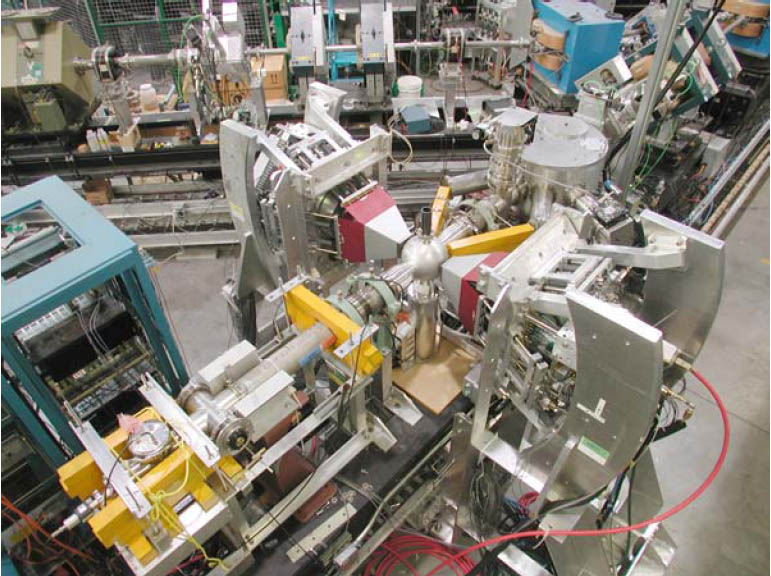High Energy / Nuclear Physics
Overview
High Energy Physics deals with the nature of the fundamental
constituents of matter and their interactions. The past 50 years have
witnessed tremendous progress in our understanding of these issues, and
a remarkably simple and elegant picture, the so-called standard model,
has emerged as a result of intensive experimental and theoretical
investigations. Nevertheless, many basic questions remain to be
answered.
What is the origin of mass and electric charge?
What is the purpose of the heavier "copies" of the quarks and the leptons that make up most of the matter in our universe?
How did each of the four fundamental forces acquire their distinctive characteristics, and to what extent are these forces related?
Exploring these issues requires probing the structure of matter at extremely small distances, and therefore high energies. Consequently, experimental activity focuses on the use of high-energy accelerators to reach extreme conditions, and theoretical approaches lead to frontiers of modern mathematics in attempts to crystalize and unify understanding.
The Department has a long and distinguished history
of research in the field of High Energy Physics, which continues to the
present. On the experimental side, Department faculty currently
participate in a broad range of major experimental endeavors that
address such fundamental issues as:
- The search for the origins of symmetries (and their violations) in nature,
- The possible existence of new particles such as Higgs bosons and supersymmetric partners of the known fundamental particles,
- Studies of the properties of the heaviest quarks and bosons (top, bottom charm, W, and the Z),
- Searches for dark matter
- Investigations of neutrino oscillations and neutrino mass.
- The substructure of the nucleon.
Theoretical Physics
On the theoretical side, active areas include investigation of the foundations of Quantum Field Theories (Profs. Das, Hagen and Rajeev), the phenomenological application of theory to experiment (Profs. Orr and Rajeev), nonlinear integrable models (Prof. Das) and non-associative algebras (Prof. Okubo).
Experiments at Hadron
Colliders
 |
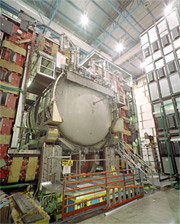 |
 |
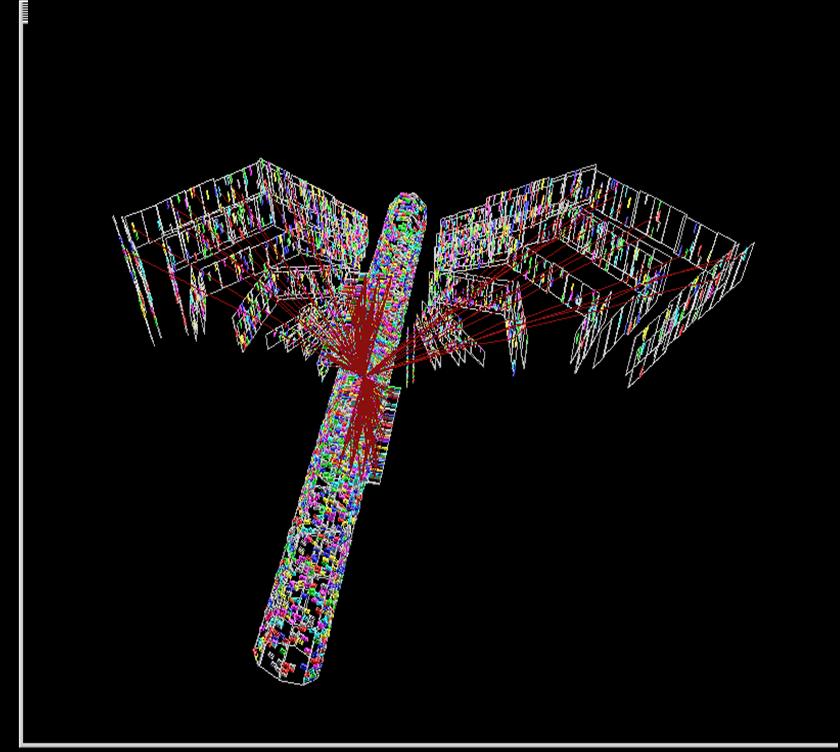 |
| CDF | D0 | CMS | PHOBOS |
- CDF(Profs. Bodek and McFarland, and Drs. de Barbaro, Budd and Sakumoto) at the proton-antiproton collider at Fermilab
- D0 (Profs. Demina, Ferbel and Slattery, and Drs. Ginther and Zielinski) at the proton-antiproton collider at Fermilab
- CMS (Profs. Bodek, Demina and Slattery, and Drs. de Barbaro, Budd and Ginther) at the proton-proton Large Hadron Collider at CERN
- PHOBOS (Profs. Manly and Wolfs) at the Relativistic Heavy Ion Collider at Brookhaven--- studies of quark-gluon plasma as a model for conditions in the early universe.
Experiments at e+e-
Colliders
 |
 |
 |
| CLEO | BES
III |
ILC |
- CLEO (Prof. Thorndike) at the Cornell Electron Storage Rings --- studies of the properties of the Bottom and Charm Quarks
- BES III (Prof. Thorndike) at the Institute of High Energy Physics (IHEP) in Beijing, China -- studies of the properties of the Charm Quark and Tau Lepton
- ILC Investigation of physics possibilities at Next International Electron-Positron Linear Collider (Profs. Manly and Orr)
- Development of electron beams for future accelerators (Prof. Melissinos);
Neutrino and Electron Scattering Experiments
| NuTeV | MINERVA
|
JUPITER | T2K |
- NuTeV (Profs. Bodek, and McFarland, and Drs. de Barbaro, Budd and Sakumoto) at Fermilab.
- MINERVA (Profs. Bodek, Manly, and McFarland, and Drs. de Barbaro, Budd and Sakumoto) at the NUMI beam at Fermilab Fermilab
- JUPITER (Profs. Bodek, Manly, and McFarland, and Drs. de Barbaro, Budd and Sakumoto) at the Jefferson Laboratory
- T2K Japanese Hadron facility
(J-PARC)
Particle Astrophysics
and Non Accelerator Experiments
| Dark Matter
Zeplin |
LIGO |
- Dark Matter (Zeplin) liquid xenon detectors (Prof. Ferbel, Schroeder and Wolfs).
- LIGO (Prof. Melissinos), a gravitational wave detector
Experiments with Nuclei
| Gammasphere, CHICO | Bambino |
Gammasphere, CHICO, and YRAST detectors. (Prof. Cline)
Prof. Schroeder'
